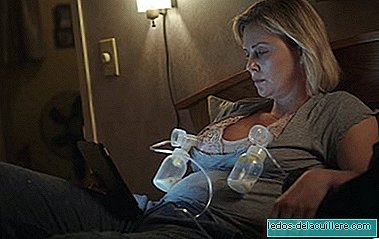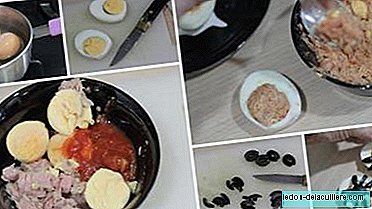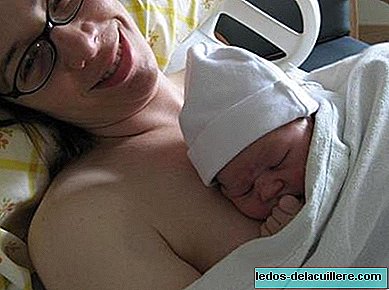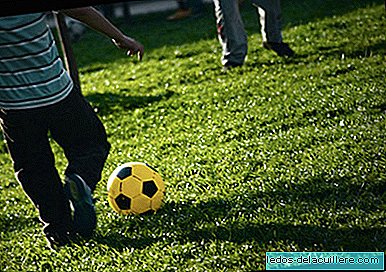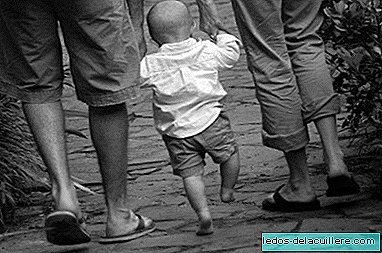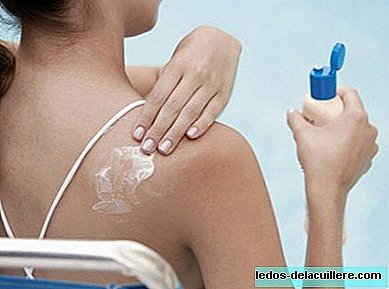
Currently, there is a great variety of photoprotectors to preserve our skin from the harmful effect of exposure to sunlight, especially the skin of babies and children, as well as the skin of the pregnant woman, since these are more sensitive to the sun.
The various products that are applied to the skin are known as photoprotectors in order to protect them from the harmful effects of ultraviolet A (UVA) or ultraviolet B (UVB) radiation. This is possible because in its composition they carry substances called filters, capable of curbing the action of one or another type of radiation. But, What types of photoprotectors do we find in the market?
According to the protection mechanism we can distinguish between chemical or organic photoprotectors, which act by absorption, and physical, inorganic or total screen filters, which act by reflection, that is, reflecting sunlight.
Many products marketed combine these two types of photoprotection. Currently all packages of the marketed photoprotectors must clearly indicate the type of filter it is and the absorption spectrum they protect.
- Chemical or organic photoprotectors: are substances that applied to the skin absorb photons from sunlight, through photochemical reactions, and modify them so that it does not harm the skin. It is important to know that they need about 30 minutes to take effect, so you have to apply it well in advance before exposing yourself to the sun. Since they are absorbed through the skin, they have a higher risk of allergy, so their use is restricted in children. The most used substances are PABA and its derivatives. As we said yesterday, we must avoid PABA in the protectors for babies, pregnant women and women who breastfeed because there have been cases of intoxication and because it is a substance on which there is a lot of controversy and studies on its effects are lacking.
- Physical, inorganic filters: they are inert substances that applied to the skin reflect sunlight like a mirror and, unlike the previous ones, do not absorb radiation. They are much more effective in terms of protection because they protect the entire solar spectrum and have less risk of allergy, but are less cosmetic, leaving a thin whitish layer on the skin. This can also be an advantage, since by leaving a mark we know exactly where we have applied the protector, without leaving unprotected areas. For these reasons they are especially indicated in children. They are substances impervious to solar radiation and rarely produce allergic reactions. At present they are more cosmetic, since they leave a thinner layer on the skin. When we talk about a total screen filter We mean that it protects against UVA, UVB, UVC (short-wave ultraviolet) and IR (thermal radiation), regardless of the protection factor it has against each of these radiations.

On the other hand, according to its consistency, we can distinguish between creams, lotions, gels, mixtures between gel and cream, solid bars or sprays.
- Creams They are the most moisturizing and therefore, their lipid content is usually higher to achieve this action, although there are also lighter consistencies useful for all skin types according to the protection factor. They are usually packaged in a tube or jar, so their low volume makes them more comfortable for facial treatment. Being more moisturizing, they are the best for children and babies.
- Lotions or milks Protectors extend better and usually go in larger containers. In general they are also good moisturizers.
- Gels They are the most refreshing because of their small alcohol content that evaporates in contact with the skin giving a pleasant sensation. But precisely because of that alcohol content, which can bother the eyes and irritate the skin, they are not recommended for babies and children. They leave little residue because they are fat free.
- The mixture between gel and cream is characterized by its null fat content, rapid absorption (you just have to massage it to be absorbed) and moisturizing capacity. In this texture, the specific products for atopic skin and very sensitive to the sun and cosmetics are usually presented. Anyway, we must consult the doctor so that in these cases we recommend the most suitable product.
- The stick or solid bars They are very suitable to carry and apply as "touch up" at any time and in any place. Useful to complement the protection on lips, face and localized areas. It is the most used for skiing, climbing or just walking on the beach or mountain. They are anhydrous and very resistant to water.
- Sprays They have become popular for their convenient application. They are used to being emulsions of lotion type. In spite of its comfortable application, it is always advisable to finish distributing the product by hand to ensure a homogeneous distribution.
Everyone's skin has specific protective needs, and a greater protection factor will be needed the lower the age and the clearer the skin. Anyway, before using a new product on our skin, and especially on the skin of babies, we must first test by putting a small amount in a localized place to verify that they do not produce any skin reaction.
In the market there are great variety of specific photoprotectors for babies and children, as well as for sensitive skin, so we will have to lean towards those specific products.


